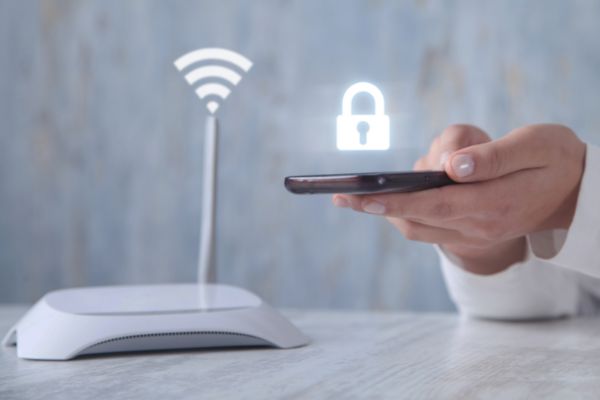Houses in the U.S. are becoming smarter, and so are hackers. This might be difficult for you to believe but having a smart home means that you're more vulnerable than ever before.
In fact, around 21 million homes in the country have professionally supervised security systems.
However, these security systems still do not offer complete protection against hacking. In one instance, hackers hijacked the primary security camera and asked for a ransom to exit the system by using the network connections in the smart appliance.
In another instance, a camera system's users reported similar incursions, during which hackers turned up the homes' heat to 90 degrees and played dirty music.
Which begs the question: how do these new-age hackers make your smart home more vulnerable ever before?
How Can Hackers Get Into Your Smart Home?
The security cameras installed in your home — your first line of defence against intrusion — are often a hacker’s victim of choice. Hackers can also remotely take control of lawnmowers, smart sprinklers, and other outdoor equipment through smartphone apps.
Even though they are designed to make consumers’ lives easier, outdoor gadgets with embedded computers may be most vulnerable to attacks.
Garage doors, wireless buzzers, and smart sprinklers are examples of outdoor devices that are particularly vulnerable since they might be quickly accessed by someone driving by while carrying a computer or other Wi-Fi transmitter.
Hackers may use outdoor smart devices as points of entry to your entire smart home security network.
Understanding how these products save your data is critical to preventing a third party from monitoring your network. If the system on the device connects to your primary home network and saves your private information, there is a chance that a hack of one device on the network might give a hacker access to all your information.

Having a more connected house makes life simpler and more productive. But as internet-based convenience increases, so does the chance of becoming a target of bored cyberpunk with malicious intent.
Your private details, bank account information, and even those smart recording devices could be stolen and misused by hackers.
In other words, the privacy and security of your smart home may be jeopardized if you own smart gadgets like smart speakers, TVs, thermostats, refrigerators, security cameras, and other items.
Because, in effect, these are several weakly secured entry points that could expose you to attacks.
So, what can you do to make your smart home security stronger?
Tips for Boosting Smart Home Security
As our trust and adoption of IoT and smart home technology increases, consumers will need to improve their cybersecurity practices to ensure they do not become vulnerable to cyber-attacks.
Let's check out some great and easy-to-do smart home security tips that can help you secure the smart devices in your home.
1. Secure Your Wi-Fi Network
Most Wi-Fi routers are either not secured out of the box or use a default password like “admin,” making it simple for hackers to tinker with and access devices linked to your router.
Secure your Wi-Fi network with a solid password to stop hackers from spying on your network and connected devices.
2. Make Sure All Device and Account Passwords Are Strong and Unique
Long, complicated, distinctive passwords or passphrases will deter unauthorized attempts to access your smart home appliances.

A string of at least 12 characters comprising a mix of capital and lowercase letters, symbols, and numbers particular to each account should be created. If you’re prone to forgetting your passwords or using the same password for everything, a password manager might be your best friend. A password manager can help save and retrieve passwords as and when needed.
3. Conduct Research Before Investing in Smart Home Technology
Before buying a smart home appliance, do some research. See which company makes the best product in the category and if it is a good brand overall.
Has the business ever experienced a data breach, or does it have a stellar record of offering safe products?
Also, pay attention to the data your IoT device gathers, how manufacturers utilize it, and what information they disclose to other users or parties.
Investigating the history of the manufacturer is also beneficial. The market for smart devices is still developing, and plenty of brand-new, unproven gadgets are being sold.
Avoid falling for clever marketing and hype! Let both expert and user reviews serve as your guides.
If you are looking for a smart lock, then have a look at this list of smart locks from LockJudge is a great comparison from a reliable source.
Above all, be aware of your degree of control over how your information is used and shared. If an IoT device gives you the option to refuse to have your information gathered or allows users to access and erase the data it collects, it is an indicator of a good smart device.
4. Switch on Multi-factor Authentication
Another thing you must do to increase the security in your smart home is to switch to multi-factor authentication.
In addition to the password and username combination, multi-factor authentication calls for users to confirm several things to validate their identity — typically something they possess and a factor particular to their physical selves, such as a retina or biometric scan.
If your login information was ever made public due to a security breach, a biometric scan can stop a cybercriminal from accessing your network or account via credential-stuffing techniques (where they’ll utilize email and password pairings to hack online profiles).
5. Update Your Smart Home Devices Frequently
Keep current with any software upgrades released by the maker of your device. Regularly visiting the manufacturer’s website is always a great idea because available upgrades are not always made public.
Update any mobile apps that are connected to your IoT device as well. To ensure you always get the most recent security patches, change your settings to enable automatic software updates.
6. Inspect and Protect Your Network
As the central hub connecting all the gadgets in your home, your router should be the most secure device in your smart home. Ensure your network name does not reveal your address after changing the router’s default password and name to prevent hackers from finding it.
Check your router's use of an encryption technique, such as WPA2, to ensure the security of your connections.

In addition, think about establishing a “guest network” for your IoT devices. By using this second network on your router, you can keep your laptops and smartphones separate from IoT devices.
Therefore, even if a device is hijacked, a hacker still won’t be able to access all the crucial data stored on your PC. For instructions on how to set up a guest network, consult the handbook provided by your router.
7. Install a Comprehensive Security Program
Use a security solution that offers intelligent security for your home network, so you don’t have to go at it alone.
You can relax knowing you have a strong line of defence against the perils of being online because the router automatically protects your connected devices.
8. Protect Your Office Equipment
Working from home means office-related devices relying on your home Wi-Fi must be equally as secure as your personal devices.
Ensuring your devices are equipped with the most recent anti-malware technologies will help you lessen their threat.
Security Begins at Home
Understand that every Bluetooth, Wi-Fi, and every other wireless connection you create is vulnerable to attack.
So, knowing your susceptibility to being hacked will help you better understand the dangers connected to your smart home devices and the tools you need to mitigate those risks.
Remember: The smartest home you can have is one that is secure.
If you enjoyed the article, spread the word around. Every share helps us reach people who are unaware of smart home security requirements. Help us secure their safety and yours.

